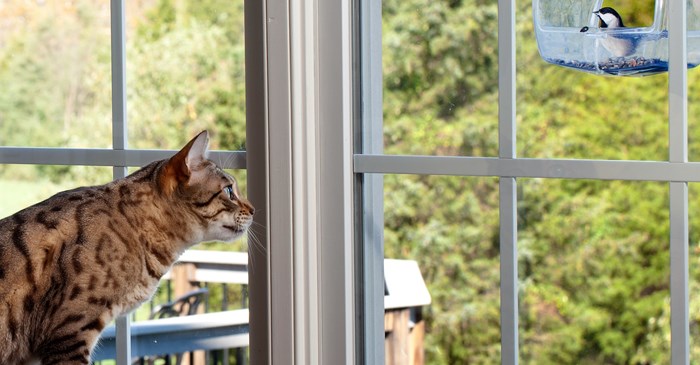We know how much you enjoy seeing your neighborhood songbirds flock to your feeders. Setting out food for them proves you have only the best intentions for them as well. By following these tips, backyard birders like you can maintain an environment that is both safe and healthy for the birds.
1. Be aware of windows
With the sky and treetops reflecting from the glass, it’s difficult for a bird in flight to recognize the hard barrier that lies ahead. To minimize the danger, be aware of the window collision danger zone. Feeders should be placed either less than three feet from the glass, or greater than 30 feet.
2. Maintain a healthy station
Bacteria from spoiled seeds, as well as moldy hulls and droppings collecting in the tray, are a recipe for spreading avian illness. Keep an eye on seed quality, especially after a weather event, and give feeders a good cleaning every couple weeks. To do this, take them apart and wash with either dish soap or near boiling water or diluted bleach water. Then, consider hanging a dome over your feeder to protect feed from rain and snow.
3. Discourage unwanted guests
While you enjoy the sight of your flocks feasting and socializing, you might discover your feeding station has attracted something else that is watching them too. Should you notice a hawk or some other predator nearby, bring your feeders indoors for a few days. This will disperse the gathering flocks and encourage the visitor to move along. Strategic feeder placement also helps. Feeders placed near shrubs, for example, allow birds to take cover in the evergreen boughs as they take turns eating.
4. Don’t add to their stress
It’s exciting to happen upon a nest in your yard or neighborhood. Keep a safe watching distance from nesting and feeding sites, and don’t disturb their habitat. If you are a real enthusiast, volunteer to become a certified nest watcher for NestWatch, a nationwide monitoring program.
